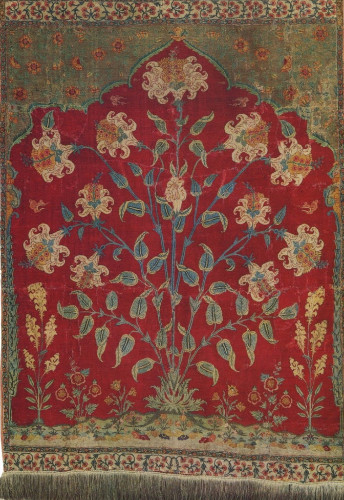Framing the Islamic Prayer Rug: Image, Symbolism and Function

Jeff Spurr
Thursday, October 11, 2018
In 1974, Richard Ettinghausen marshaled the then available early literary and visual evidence, especially that to be found in miniature paintings, for the presence of prayer rugs in Muslim societies. In 2003, I published a complementary article in Hali addressing the relation of rugs and textiles to the pragmatics of Muslim prayer. In the light of new information, and adopting a more synthetic approach, I will be focusing on the nexus of religious themes, devotional concerns, visual imagery, and practical matters that resulted in the development of the prayer rug as an iconographically distinct object, and of visually and symbolically related textiles. To achieve this aim, I will also address the artistic and architectural environment that frames and informs these objects, starting from the beginnings of Islam.
Jeff Spurr is a scholar of Islamic textiles — with particular focus on the Kashmir shawl, the textiles of Central Asia, and the Islamic prayer rug — and of the history of photography in the Middle East. At Harvard University, he devoted 26 years to documenting Islamic visual culture and to building collections of historical photographs of the Middle East. He has curated or co-curated several exhibits, and co-authored books, published articles, and given papers in both fields.
